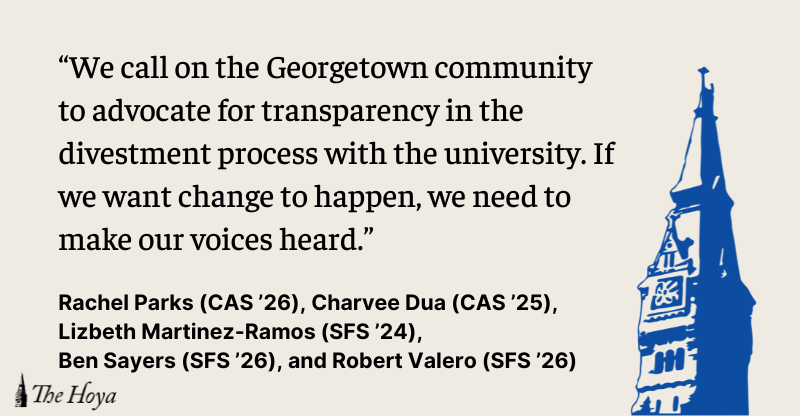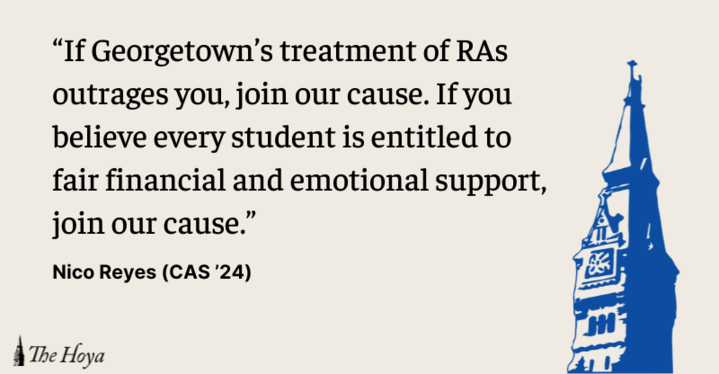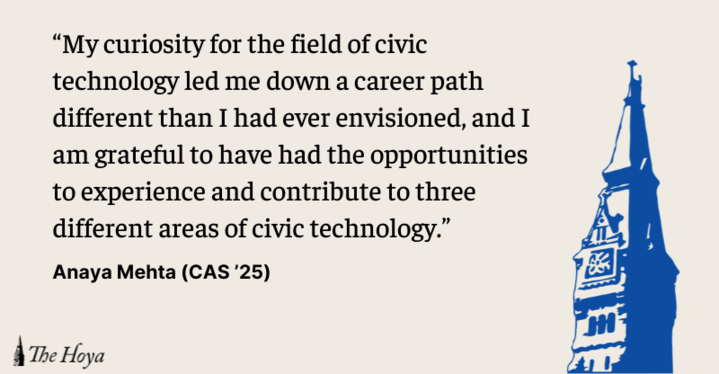It takes a lot to move a glacier and not much less to fundamentally alter a 223-year-old university’s disciplinary system.
It requires years of unjust outcomes; it necessitates observers of the system — students, faculty and staff alike — taking the time to audit rules and realities. Above all, however, it takes the voice of the community speaking out in support of higher standards of justice on the Hilltop in resolute unison.
In the case of the effort to raise the Code of Student Conduct’s disciplinary standard, it will take the voice of the community speaking out in unison to effect real change.
The student body will be presented tomorrow with a chance to put public opinion behind what has been a months-long effort to raise the Code of Student Conduct’s burden of proof from “more likely than not” to “clear and convincing” evidence. The Georgetown University Student Association will send out an online ballot to undergraduates to cast votes regarding both the change in the disciplinary burden of proof and their residential area’s GUSA senate candidates.
It has been six months since the Disciplinary Review Committee — a body composed of administrators, faculty and students — recommended raising the evidentiary standard to “clear and convincing.” Throughout that time, the issue has been shelved by the Office of Students Affairs. Citing an impending external review of the disciplinary system by two administrators from Duke University and Loyola University in Chicago, Todd Olson, vice president for student affairs, has acted with opaqueness rather than transparency. Perhaps most inexplicably, he’s basing his decision on the advice of a duo of unfamiliar officials from different universities rather than on that of his own counseling body dedicated to disciplinary matters.
Even more egregious is that this past summer, the university accepted certain disciplinary changes based on the 2010 Campus Plan and negotiations with neighbors, yet it now refuses to validate the conclusions of investigative and deliberative work done by its own students, faculty and staff.
As the university delays, the letter of the law remains unchanged, and students continue to be subjected to a disciplinary system based on probability rather than evidence, striving for efficiency instead of justice.
The current burden of proof, “more likely than not,” gives adjudicators, such as hall directors and hearing boards, the authority to find a student charged with disciplinary violations responsible based on a 51 percent chance that the suspect is guilty. With virtually any burden of proof, it is unrealistic to think that respective administrators’ interpretations will be identical, yet the broad liberty for interpretation that this standard affords lends itself to inconsistencies in students’ disciplinary experiences. The simple fact that a student was written up in the first place could deem him or her guilty under the “more likely than not” statute. Such a system opens up an unacceptably large window for subjectivity, individual error and premature conclusions.
The argument for revising the evidentiary standards to “clear and convincing” is further strengthened by a review of our peer institutions. Duke University, Cornell University and the University of Pennsylvania all use the “clear and convincing” burden of proof. The higher standard is used even within our own university: The Georgetown University Law Center and the undergraduate appeals process both demand evidence over probability. Yes, that’s right: While the university needs to prove only that a student “more likely than not” did something wrong, that same student has to present “clear and convincing evidence” that his or her case was mishandled.
Some will justify the “more likely than not” standard with pragmatic arguments for efficiency. But data from Duke’s Office of Student Conduct may provide the numbers needed to assuage such concerns: Over five years, 78 percent of students adjudicated under the “clear and convincing” standard were found responsible for one charge.
At the end of the day, however, our disciplinary system must not be about what is easiest for administrators. It must be about justice and the Code of Student Conduct’s ethos: “the dignity of and worth of every person and the love of truth.” In the hope of making the disciplinary process at Georgetown a positive learning experience — and one that is consistent with our Jesuit values and stated love of truth — it is time to improve the integrity of the standard that sets the tone for the entire system.
Students and their fellow supporters of justice on campus scored a huge victory last spring when, after a year of fact-finding and deliberations, the DRC ruled in favor of the university adopting the “clear and convincing” standard. But as we now know, it takes more than just a recommendation to change the status quo of the Georgetown disciplinary system. It will require the entire campus to speak out at the same time, saying the same thing: “Clear. Convincing. Fair.”
Clara Gustafson is a senior in the School of Foreign Service. She is president of the Georgetown University Student Association. Sam Schneider is a senior in the College. He is co-director of the Student Advocacy Office and a member of the Board of Directors of The Hoya.














